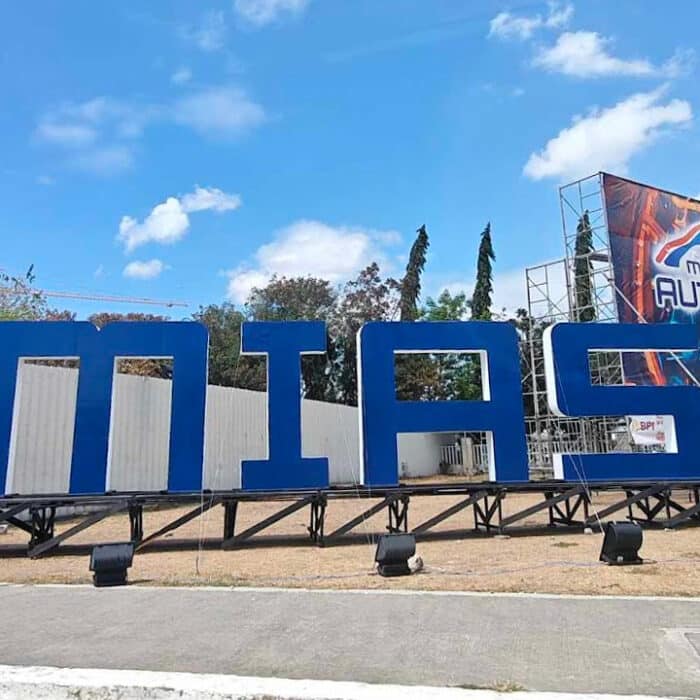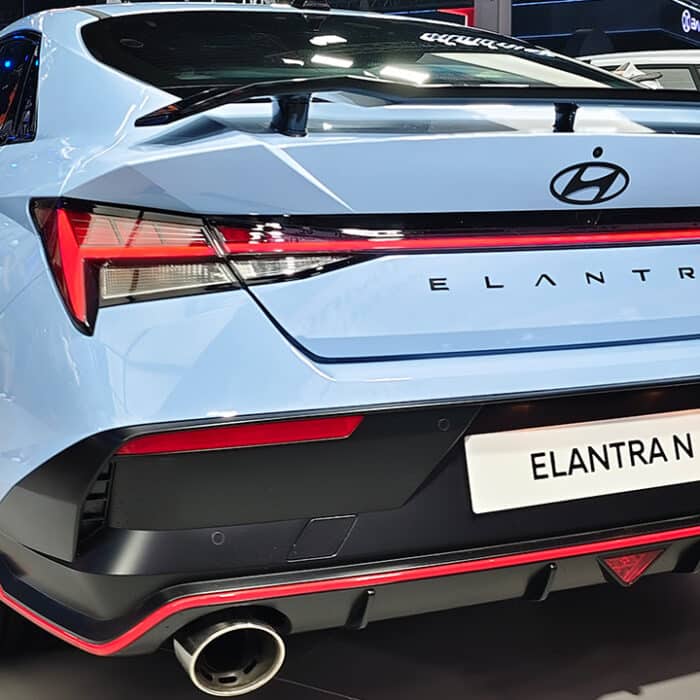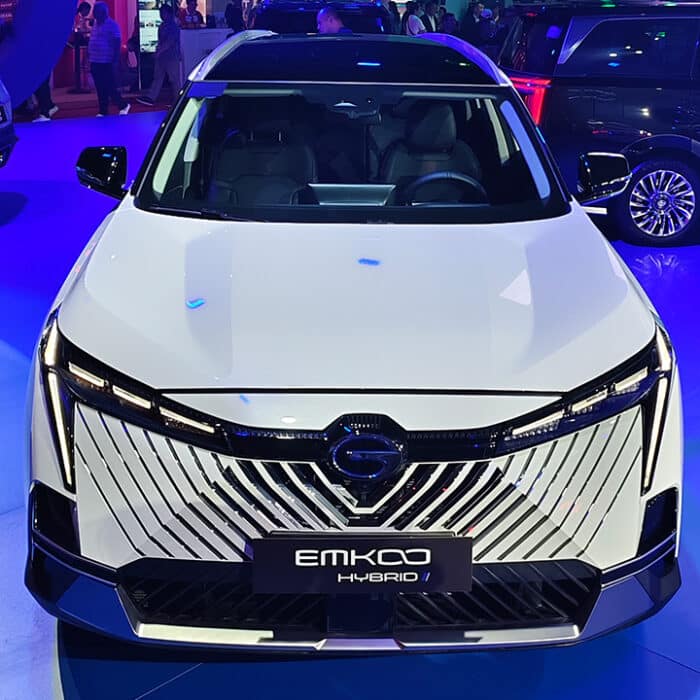If there was one thing that stood out to me when I first watched Star Wars: A New Hope, it wasn’t the iconic lightsaber, the Two Suns over Tatooine, or even the swash bucklin’ Han Solo (he shot first). It was actually the Death Star battle that hooked me to be a forever fan of Star Wars. Ever since then, flying an X-Wing or TIE Fighter has always been a fevered dream of mine. And playing Star Wars: Squadrons on the PS4 got me close to that dream – albeit with a few flaws.
A long time ago in a galaxy far, far away…
First leaked as “Project Maverick” earlier this year, Star Wars: Squadrons was officially revealed on June 15 and launched last October 2. The game is cross-platform playable on the PS4, Xbox One, and PC with the ability to play on VR and PSVR as well. Many fans, including myself, saw it as a nod to the classic X-Wing series.
It was developed by Motive Studios, one of the developers under EA that had worked on the (highly debated) successful Star Wars Battlefront II. Squadrons aims to fill in the void of “space combat simulation” games that legacy Star Wars games had accomplished before. But how much of an accomplishment is Squadrons? Is it another cash grab by EA to reel in the Star Wars community? Or does Squadrons soar as a must-have Star Wars game?
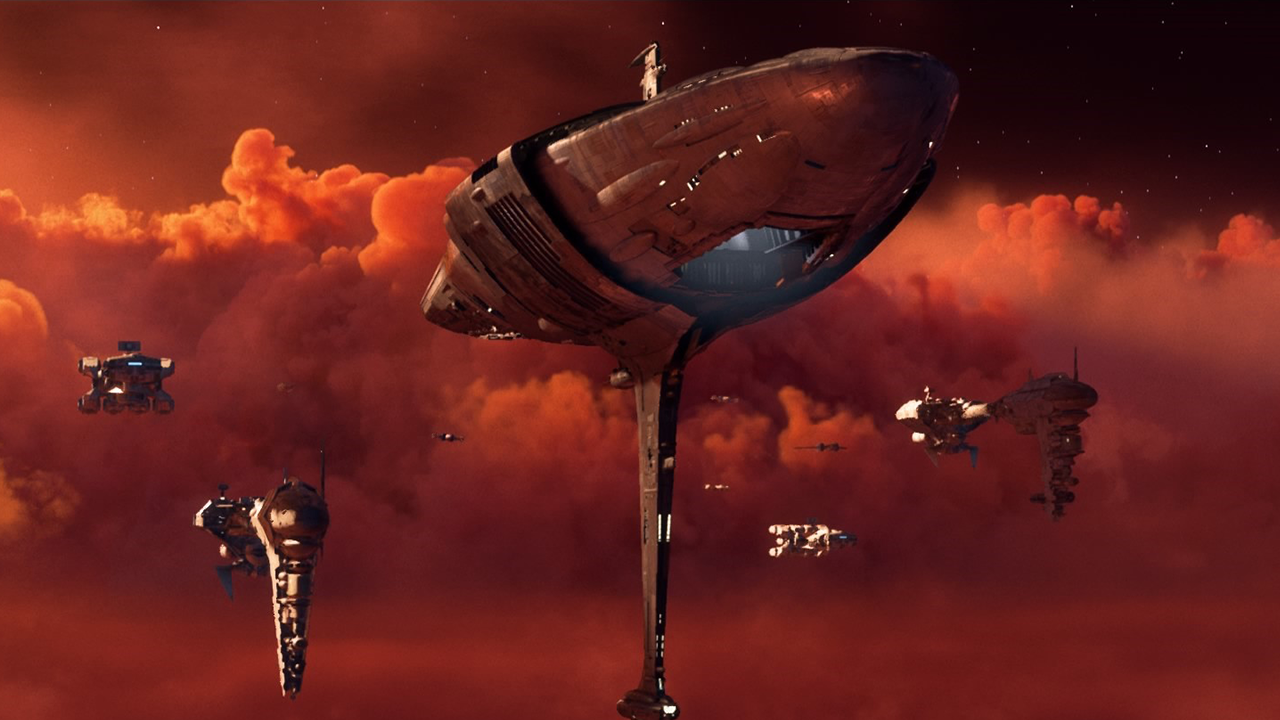
Campaign and Story
As with any Star Wars game, story and setting are of the utmost importance. When is it set? Is this before the Battle of Yavin? Is this connected to (God forbid) the sequels Episodes 7 to 9? Whose shoes are we filling this time?
Well, to answer that last question, you fill in the shoes of both a New Republic and Imperial pilot. While the prologue is told in the aftermath of the destruction of Alderaan, the main story is set 4 years after the Battle of Endor. It follows the New Republic Vanguard Squadron and the Imperial Titan Squadron centered around Project Starhawk. You alternate between the customizable pilots of each squadron.
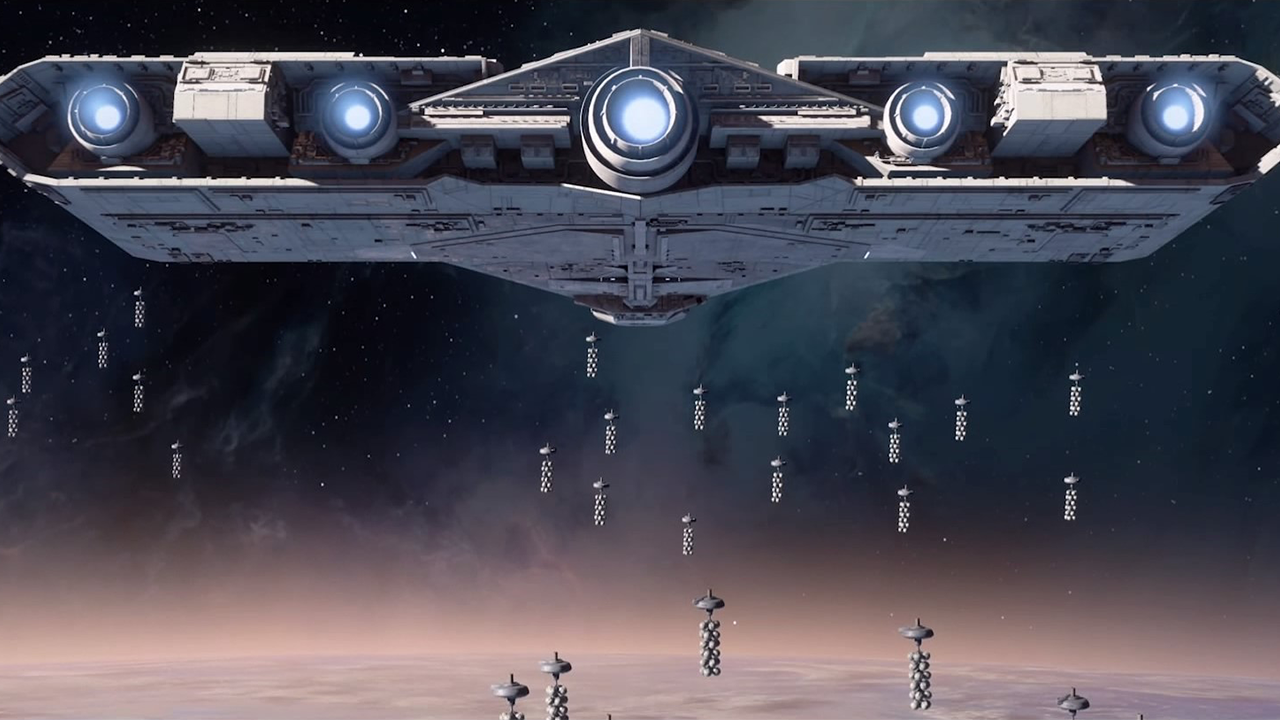
I found the dual parallel storylines to be a refreshing take on Star Wars games. This time around, you play on both sides of the war. You see the perspectives of both factions while being thrust into what becomes a rivalry between Vanguard and Titan. Your squadron mates also help flesh out different ideals and morals of the story through conversations you have with them in the hangar or briefing room. Although at times those same conversations would be exposition dumps or mundane talk that, at instances, would brisk through by skipping.
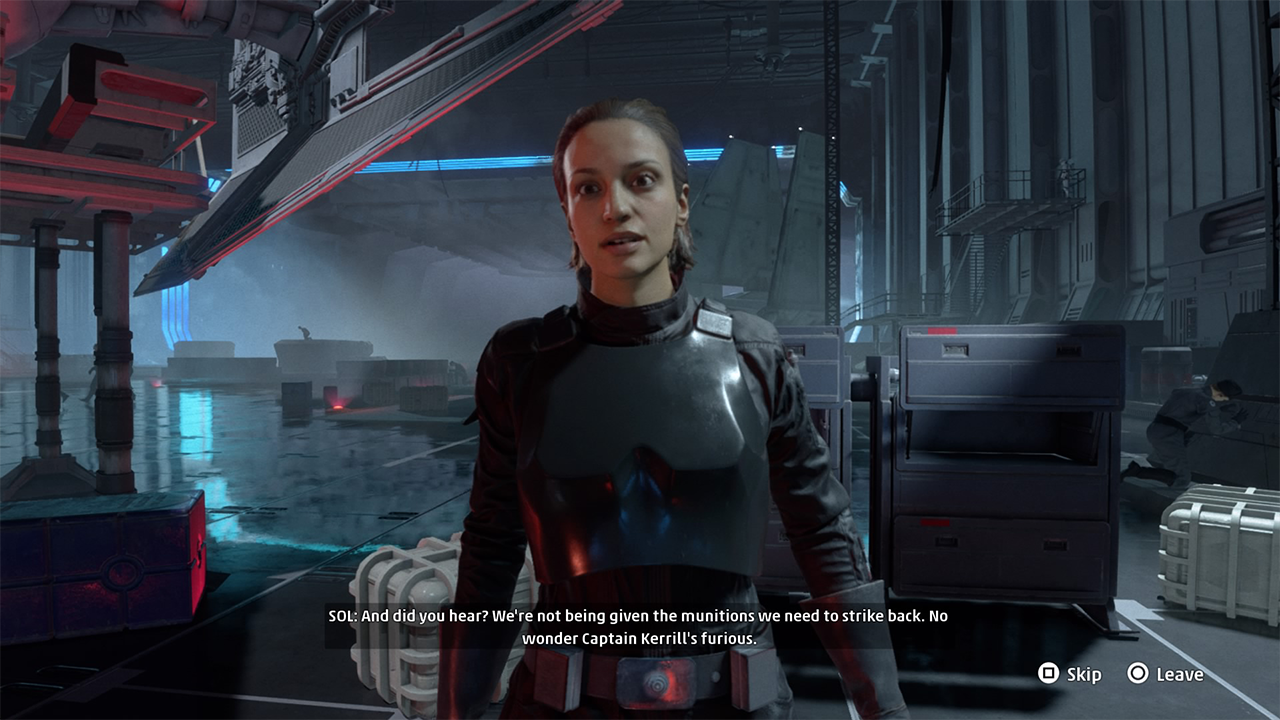
In this game, it feels like you’re not the main character of the story but rather a proactive observer of the personal battle between Lindon Javes and Terisa Kerrill, two sides of the same coin. There are also characters that call back to other Star Wars lore, such as Hera Syndulla from Star Wars Rebels and Admiral Rae Sloane from the Aftermath book series.
If anything, the campaign and story seem to just expand accounts of what the galaxy looked like after the original trilogy. It’s not perfect and definitely not ground-breaking in terms of story-telling. But for any fan, this feels like a paperback novel with good parts sandwiched between lulls.
Gameplay
Fans of the old X-Wing series would have, no doubt, recognized certain similar aspects of gameplay in Squadrons. For me, the first thing I noticed was the power management system which, in my opinion, is the backbone of the game. It sets Squadrons a notch up from other flight, or rather space, arcade shooters. Flying a starfighter in the Battlefront games is like driving an entry-level sports car. Flying a starfighter in Squadrons is like driving a Formula One race car. Or a tank. Depends on which starfighter you fly.
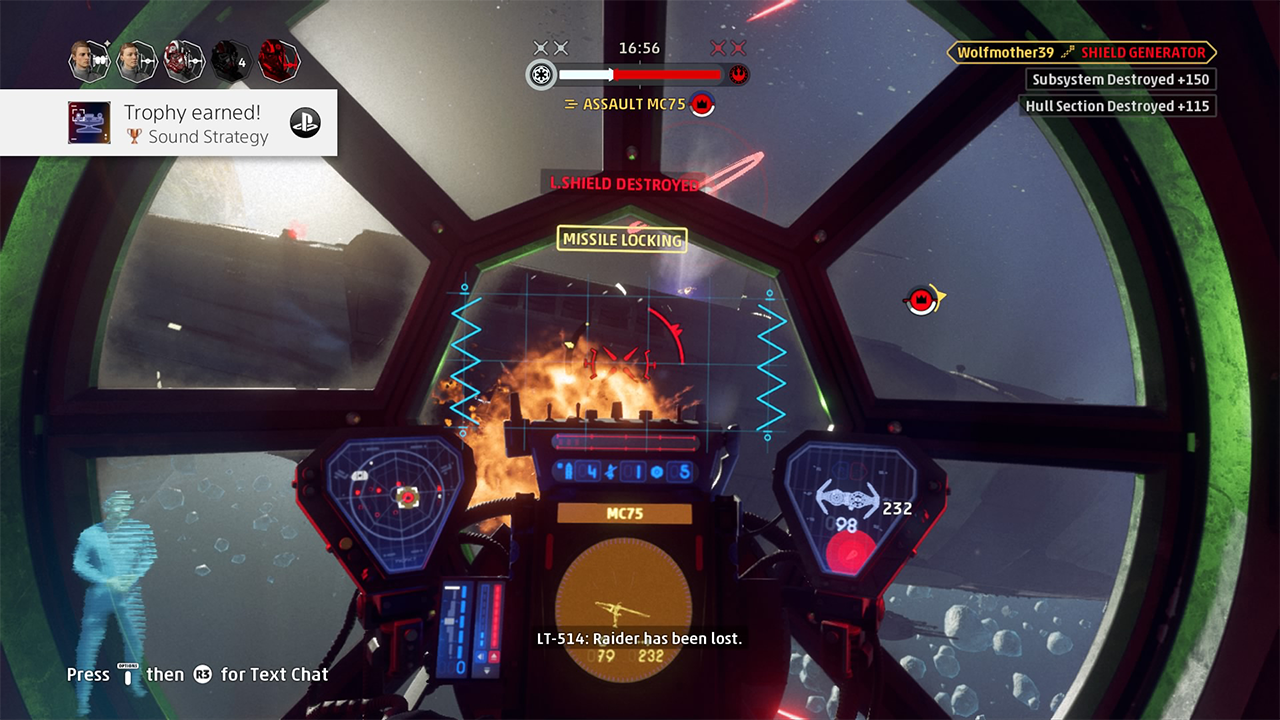
The power management system is the gears on your starfighter powering up three different aspects of your spacecraft: engine, lasers, and shields. There are 4 types of starfighters on each side which total to 8 different crafts. There are also various customizable components available to fit your own playing style.
Piloting is less like a point-and-shoot-lasers concept and more on controlling your craft on micro and macro levels. This makes Squadrons a highly immersive experience. Restricted to the first-person view of your cockpit, you’re left with your own controls, indicators, and instrumentation to fight the oncoming barrage.
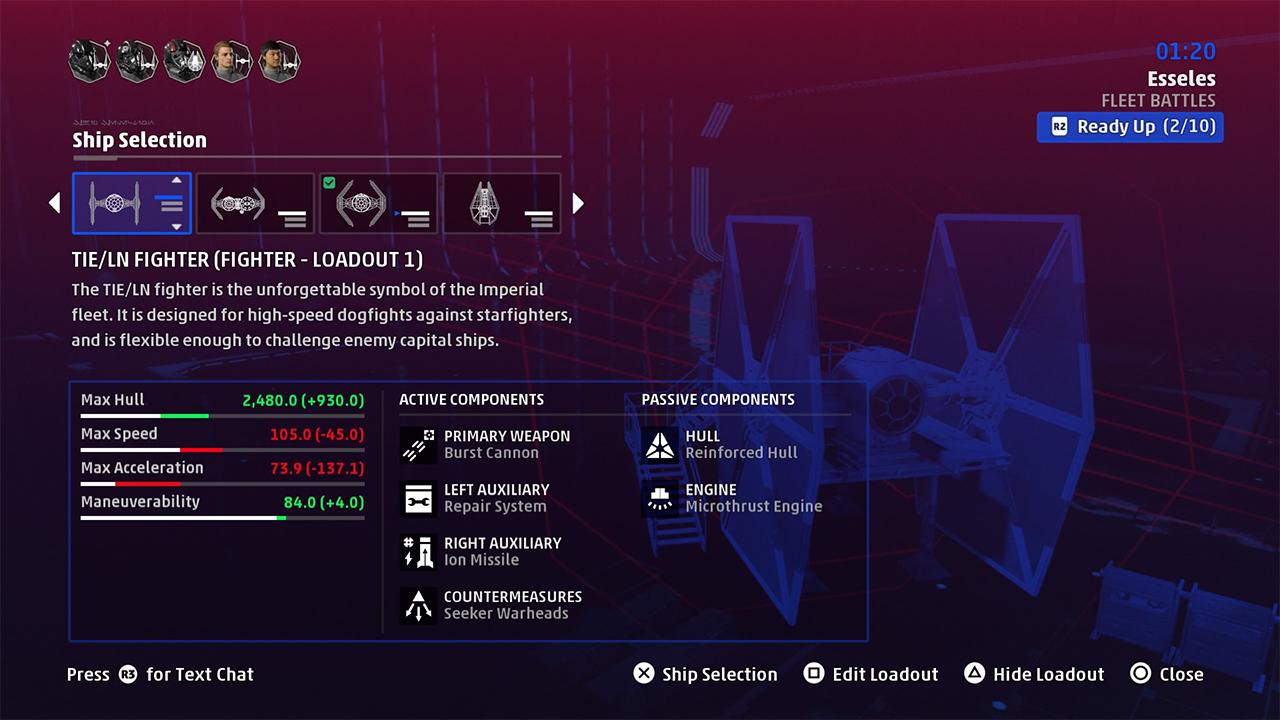
Customizing your starfighter to your preference also has implications on the various multiplayer game modes. Different components such as different hulls, shields, and lasers can help personalize your flying style. Not one starfighter loadout is fit for all situations but you can easily find yourself attached to a specific combination that you may run on your starfighter.
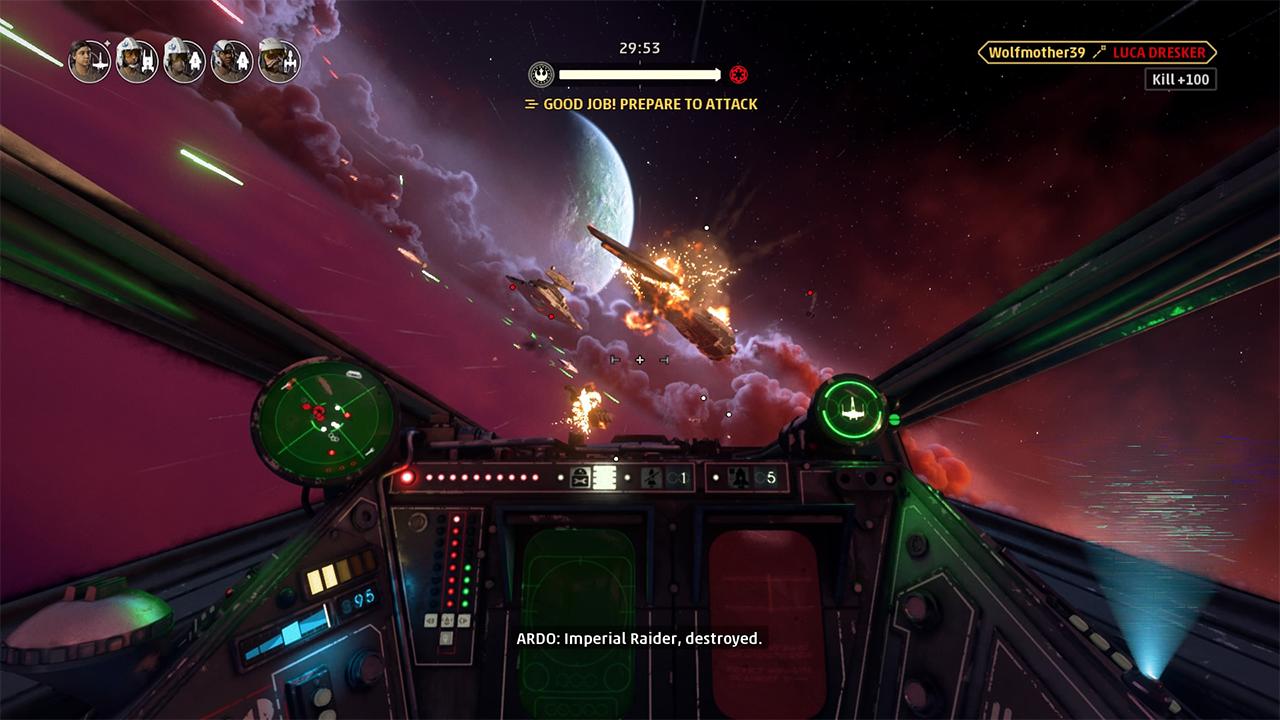
Without exaggeration, I have never used all the buttons on my PS4 controller before I strapped in the X-Wing for the first time. What also is a plus for gameplay is the element of destroying subsystems on capital ships. This made for more tactical precision strikes as opposed to just flat-out shooting a big target. Getting yourself a joystick and VR would even one-up the experience and make it more immersive.
A downside to this technical level of piloting is that previous players of Battlefront will find it a little complicated to jump into on the onset. Despite that, Squadrons has made it a point to fully realize the starfighter experience for anyone dreaming what it would be like.
Graphics and Sound
Running on the Frostbite Engine 3, Squadrons carried over the same depth and detail that the Battlefront series had. Aesthetically, Squadrons looks more like a realistic arcade shooter than a simulator. There’s even various key art akin to old World War II moral posters and the details of each starfighter polished from the exterior to the interior. It’s obvious that a lot of care has gone into the rendition of models and textures. Where it does lack in the graphical fidelity department are the particles. In other words, the projectiles, the debris, and the explosions.
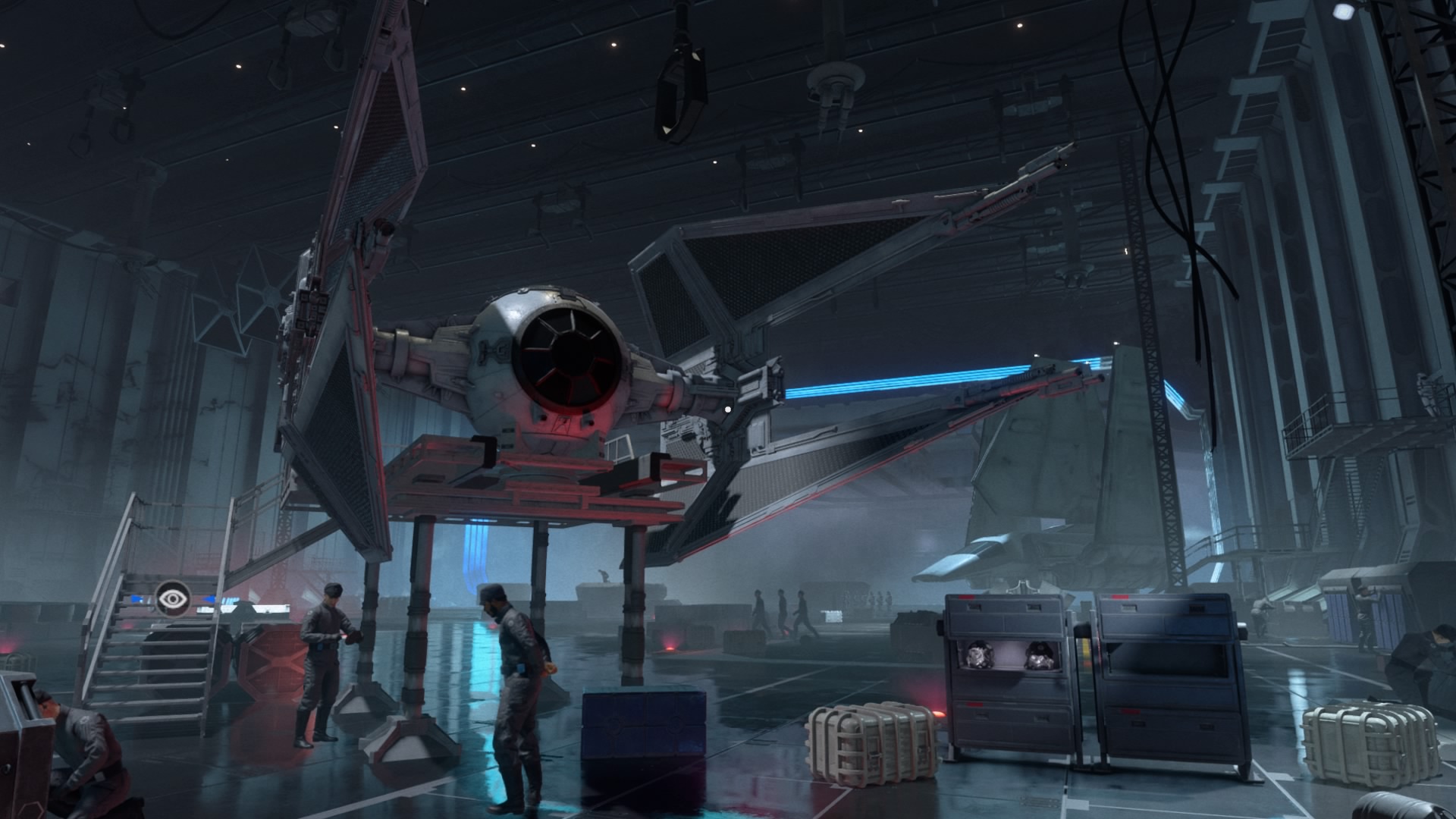
It’s like how they did it in the original trilogy if I think about it; greatly modeled starfighters, but once they explode, it looks like a bad fireball. But that minor gripe is not enough for me to not revel in the well-designed ships, levels, worlds. I can only imagine how awestruck it must look on VR and on Ultra graphics settings. (Bless all ye, PC Master Races).

Soundwise, Squadrons does not pull its punches. Everything sounds like it should be in the Star Wars Universe; from the laser bolts to the definitive TIE engine scream all in a flurry. It’s even backed by music that takes motifs from John Williams’ original score. The voice acting, in general, is also well thought of and diverse, with banter and quips here and there while you fly around shooting down other starfighters.
Character voices in the campaign also feel authentic in terms of delivery, never sounding forced or over-acted. Overall, the look, feel and sounds of Squadrons is a tour-de-force, for fans and non-fans alike.
Multiplayer: Dogfight and Fleet Battles
The bread and butter of Star Wars: Squadron are the multiplayer game modes: Dogfight and Fleet Battles (Fleet Battles being the bread). Dogfight is your typical 5v5 team deathmatch. Fleet Battles, on the other hand, is a tug-of-war style game mode where the main objective is to defeat the enemy flagship, going through waves of advance or retreat.
Choosing your fighter, loadout, and tactics in relation to what your teammates are flying will make or break your team. Each of the starfighter roles plays their part importantly in the battle. Are you going to bombard head-on or try a hit-and-run on the subsystems? What you and your squadron mates decide will determine the outcome.
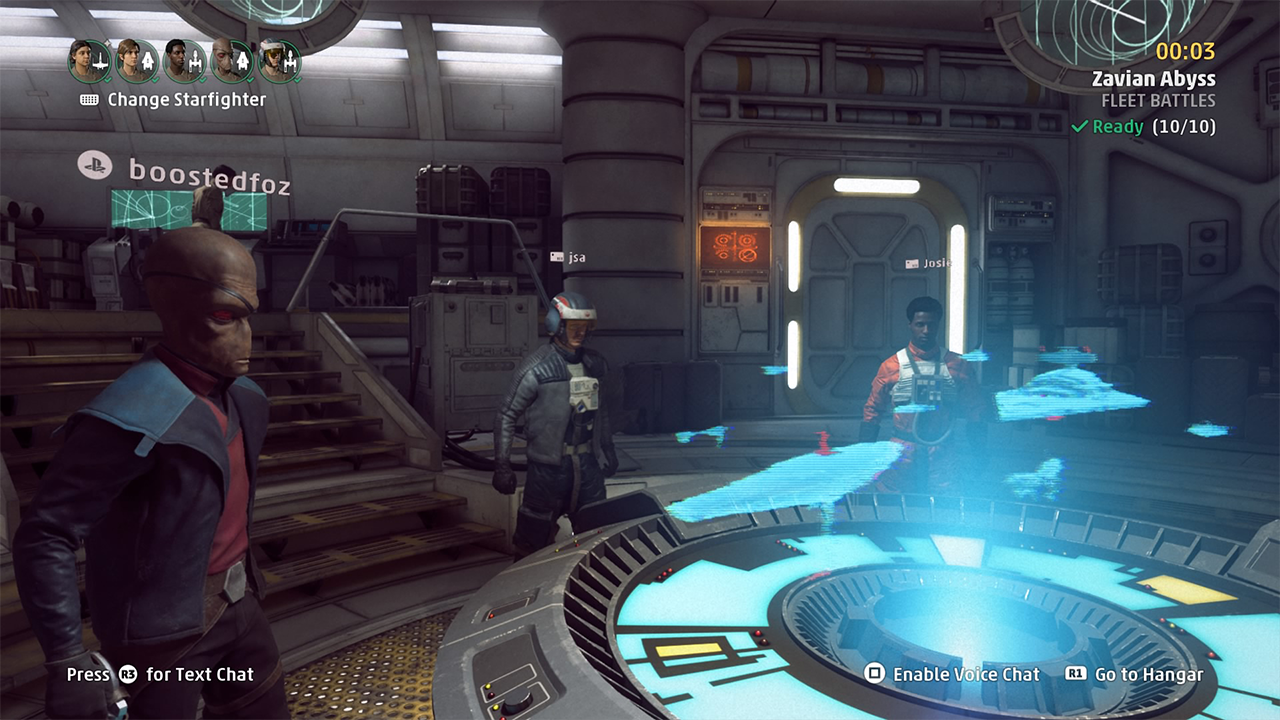
With Multiplayer, there is also a ranking system that goes from Maverick status to Galactic Ace. At first, the multiplayer experience was exhilarating. I found myself fighting tooth and nail to shoot down other starfighters, trying to take down subsystems, and cheering once we took down capital ships. Then as the hours and matches went by, familiar problems when it came to team-based multiplayer started popping up.
Sometimes, I’d find myself in a 4v5 game, my team having the handicap. Despite that, the match was launched, and leaving it would mean a decrease in my MMR (Matchmaking Rating). Other times, I’d find myself in a team that just wanted to shoot down other players rather than play objectives.
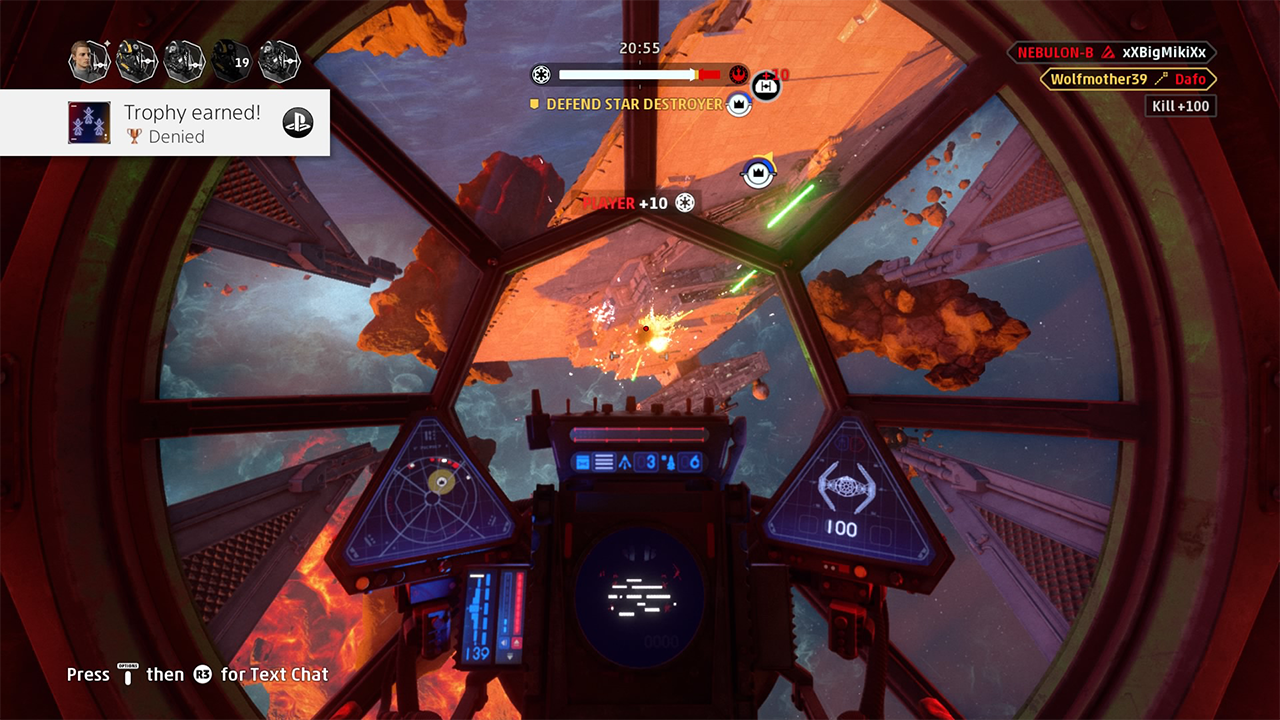
To summarize, the multiplayer experience can be slightly frustrating while playing solo and the problems of MMR are prevalent when it comes to players leaving mid-game. Nearly a third of my Fleet Battles matches had a team that was down one or even two players so the chances of pulling a clutch were slim.

Funny enough, one of the in-game tips on the loading screen says “Star Wars Squadron is best enjoyed with friends.” And I couldn’t agree more. Granted, the player base is still small, but if you can wrangle your friends to join you, Fleet Battles would be much more enjoyable. The longevity of the multiplayer feels also short, seeing as only a handful of maps and cosmetic add ons exist. Perhaps in due time, we’ll see more locations to fight in or even new starfighters. For now, it has its flaws that I do hope the devs will address and patch in the future.
Final Thoughts
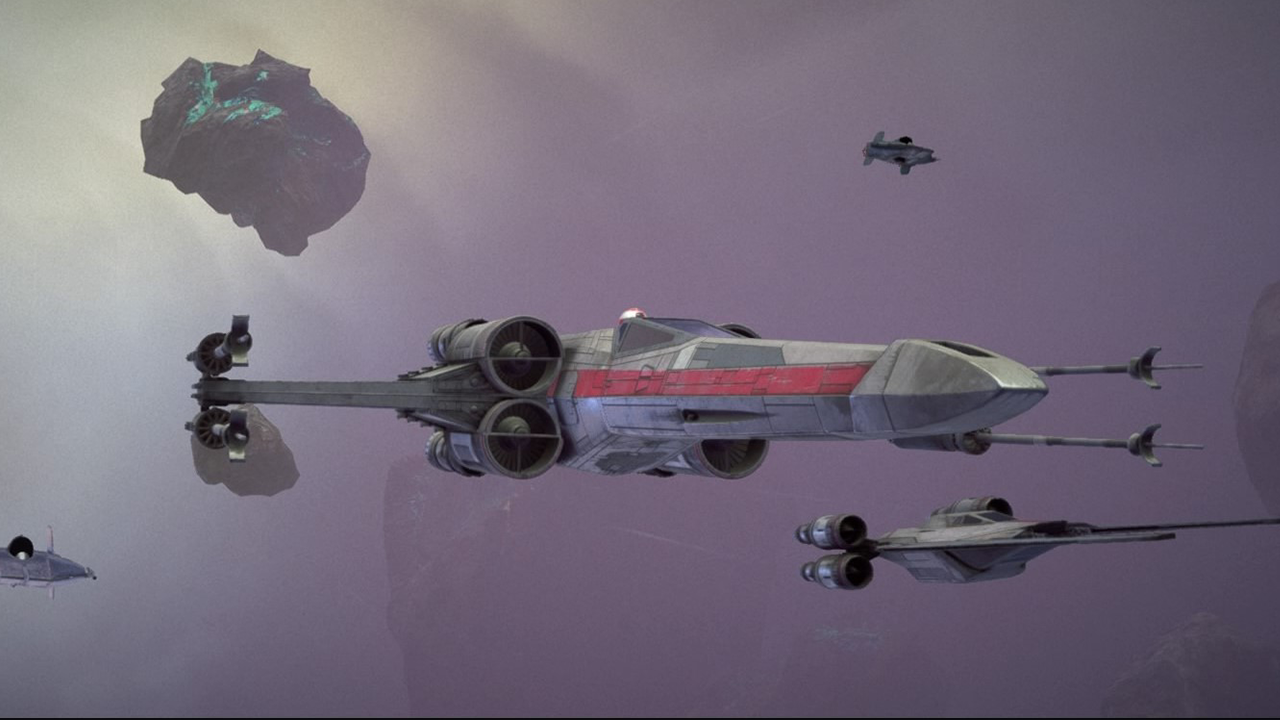
Long has it been since a Star Wars game came in with a different approach as opposed to the standard fare of FPS or third-person action games. Star Wars: Squadron is a definitive and immersive starfighter experience with minor setbacks in its core multiplayer and the worry of a short lifespan. But for $39.99, it serves as a great addition to the new Star Wars library of games and is guaranteed to satisfy the X-wing or TIE Fighter pilot in you. And as always, May the Force be with you.







